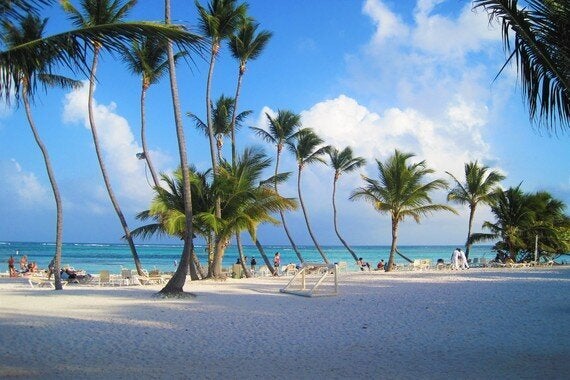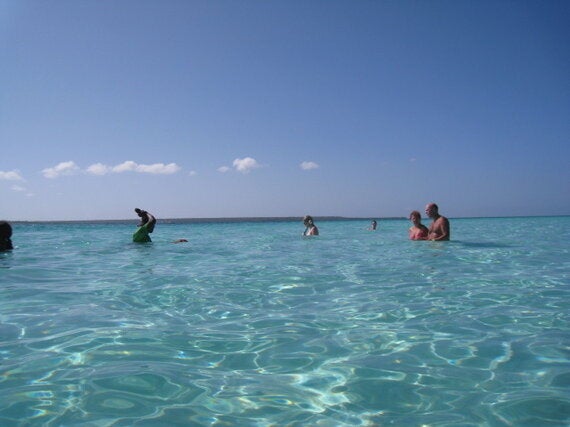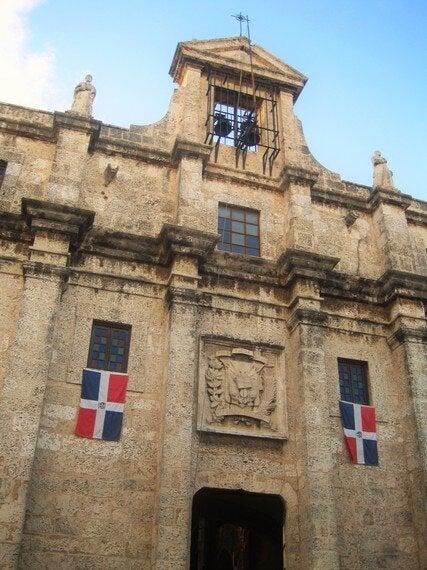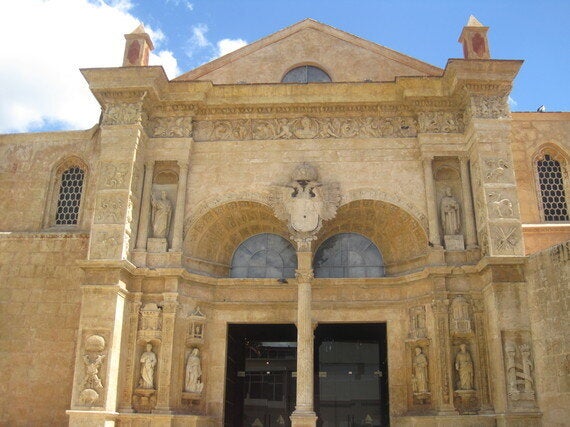Merengue, unspoilt beaches, baseball and dominoes are some of the activities often associated with the Dominican Republic - a Caribbean, Spanish-speaking country that rubs shoulders with Haiti on the island of Hispaniola.
The Dominican Republic, a 10 million-strong nation, has a special place in history in that in 1492 it became the first permanent European settlement of the "New World." The irresistible combination of postcard-perfect secluded beaches and centuries of cultural heritage attracts millions of tourists every year.
A wedding invitation took me to this corner of the Caribbean, which offered a great opportunity to experience what the Dominican Republic has to offer.
My adventure started in Punta Cana, the country's most popular town with tourists, located on the east coast. The nearby airport's thatch-roofed terminal instantly makes you feel you're the Caribbean. The February sun here felt more like 27 degrees Celsius, compared to Europe's mercury struggling to go beyond 10 degrees.

All kinds of fun activities under the Caribbean sun are on offer in Punta Cana. Golf lovers can play on world-class courses, while fans of more extreme sports can take part in kiteboarding competitions.
I prefer exploring nature, so the Indigenous Eyes Ecological Park and Reserve was the ideal place for that. This lowland subtropical forest has a dozen freshwater lagoons, some of which you can swim in.
A must-do activity is a day trip to Saona Island, where scenes from 1980's The Blue Lagoon were shot. Located on the south-east tip of the Dominican Republic, this island is the ultimate romantic escape. You're taken to it on a catamaran ride from nearby town Bayahíbe.
Drinking coconut water next to the delightful turquoise sea on a virtually deserted island, I felt like I was a million miles away from anywhere.
The speedboat on the way back makes a stop at piscina natural, a beautiful shallow sandbank with crystal-clear water. Measuring several square kilometres, this hidden gem is a few hundred metres into the sea, away from the white-sand beach. You can pick up sea stars laying at the bottom of the one-metre-deep water, which was surprisingly calm, making this place look surreal.

A visit to Coco Bongo club is the perfect night out in Punta Cana. This is a unique mix of club music and theatre and circus performances with a high-quality production. Watch out for interpretations of The Phantom of the Opera, Cats, Spiderman, as well as and songs by Madonna and Michael Jackson.
- Santo Domingo -
My next stop was the capital, Santo Domingo, with a population close to four million. The motorway linking Punta Cana to Santo Domingo is testimony to great economic development. A journey that would take four hours a few years ago now takes half that. A common feature of a coach journey are men who get on and off the bus at various stops to sell travellers biscuits, peanuts and dulce de leche, Dominican sweets.
Santo Domingo is situated on the banks of the Caribbean Sea in the southern part of the Dominican Republic. A breathtaking sight is one of the city's boulevards running alongside the sea's waterfront. But the resemblances between the capital and Punta Cana stop there. A stark contrast to the luxury resort, Santo Domingo encompasses a number of impoverished areas, which is a truer reflection of the country's economic situation.
Despite the rough quarters, though, the capital buzzes with life and history.
Santo Domingo is the oldest city in the Americas. After Christopher Columbus's arrival on the island in 1492, the capital became the site of the first cathedral, monastery, hospital, customs house and university in the Americas. They are scattered all over Zona Colonial, a UNESCO World Heritage Site. Visiting this part of the city was particularly interesting because of its strong sense of history and authenticity.
Every corner of Zona Colonial is bustling: a handful of amateur musicians playing a merengue tune in Parque Colón next to a statue of Christopher Columbus; a Dominican couple taking selfies with a Caribbean Fantasy cruise ship in the background; and an old corn-on-the-hob seller shouting "Maíz!" tirelessly.

If you walk down Calle Las Damas, Santo Domingo's oldest street, in the direction of Plaza España, and happen to cast your eyes over the national Pantheon to the left, a friendly Dominican man may well invite you to a quick free tour of this neoclassic-renaissance building. Here are buried illustrious writers, educators and military leaders. The impressive height of the building and a painting inspired by the Sistine Chapel, the Pope's official residence in Vatican City, makes this a great visit.
Continuing your walk down this historic street, you will pass the Governor's Office and, further on, the Alcázar de Colón, dating from 1510. Often featured in postcards, the latter was the residence of the third Governor, Diego Columbus, the son of Christopher Columbus.
During my time in Santo Domingo last month, I had the privilege to go on three private tours: the gradual construction of the Catedral Primada de America and a visit to its Crypt, which is closed to the public; an underground walk through the Americas' first sewers system, no longer in use, dating back to the fifteenth century; and a tour of an ongoing archaeological excavation in Zona Colonial.
Surely, one of the most entertaining ways to learn about the city's history is by watching The Battle of Santo Domingo at The Colonial Gate 4D Cinema. This multi-sensory experience takes you back to 1586 - at the heart of the action - when Sir Francis Drake, an English sea captain, invaded the fortified city of Santo Domingo.

Apart from its fascinating history, the Dominican Republic boasts a rich gastronomy. Yuca and fried plantain dishes such as tostones (twice fried plantain slices) are typical. Particularly tasty are chicken rolls filled with sweet plantain, Dominican cheese and bacon. As for dessert, coconut flan and dulce de leche, a sort of milk fudge, are a must. With its bright blue walls and large paintings hanging off them, Mesón D'Bari in Zona Colonial would be a good restaurant choice.
Exploring the Dominican Republic, its enchanting beaches and centuries-long history was like being transported to a world entirely different from mine. It's the perfect place to disconnect completely from your everyday life, as well as expand your horizons.